Table of Contents (click to expand)
Siege engines are weapons that can be used during siege warfare to break through defensive walls and gates of a city or fortress. Catapults, battering rams, siege towers and crossbows are all examples of siege engines.
Remember the huge crossbow that Cersei used to kill Rhaegal? Or the massive siege towers the orcs used to swarm up the walls of Gondor? Or perhaps you remember the massive catapults from the opening battle scene of Gladiator.
As it turns out, these aren’t just fantasy weapons, but real weapons that were used by very real people during the Medieval age.
A giant mechanical crossbow, a mobile multi-storied tower, massive catapults & enormous wooden logs to obliterate doors are just a few examples of weapons used by medieval warmongers to storm castles and forts while conducting a siege. These weapons, called siege engines, supplemented by an army of soldiers and a fearless leader, took down many strongholds during medieval times.
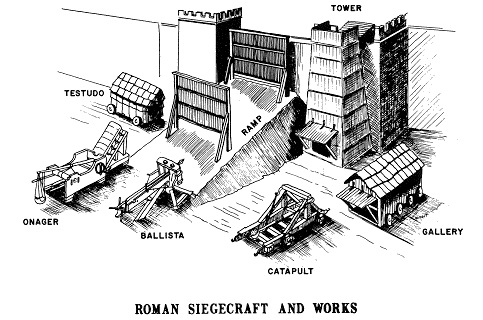
Siege Warfare
During classical antiquity and the medieval period, two armies rarely battled it out on the battlefield, instead resorting to siege warfare. This battling strategy consisted of an army surrounding a city or fortress with the intention of blocking the supply of food and trapping the people inside. Eventually, the defending army would be forced to surrender or face the attacking army on the battlefield. Since the city would usually be encircled by the attacking army, calling in reinforcements wouldn’t work either. The solution was either starve to death or hope the army inside was tough enough to battle it out and win!
However, the besieged cities usually had a stock of reserved food and water, so the attacking army had plenty of time to wait before the action began. Some sieges have been known to last for months or even years; for example, the siege of Drepana lasted 8 years, while the siege of Candia in the 17th century continued for almost 22 years!
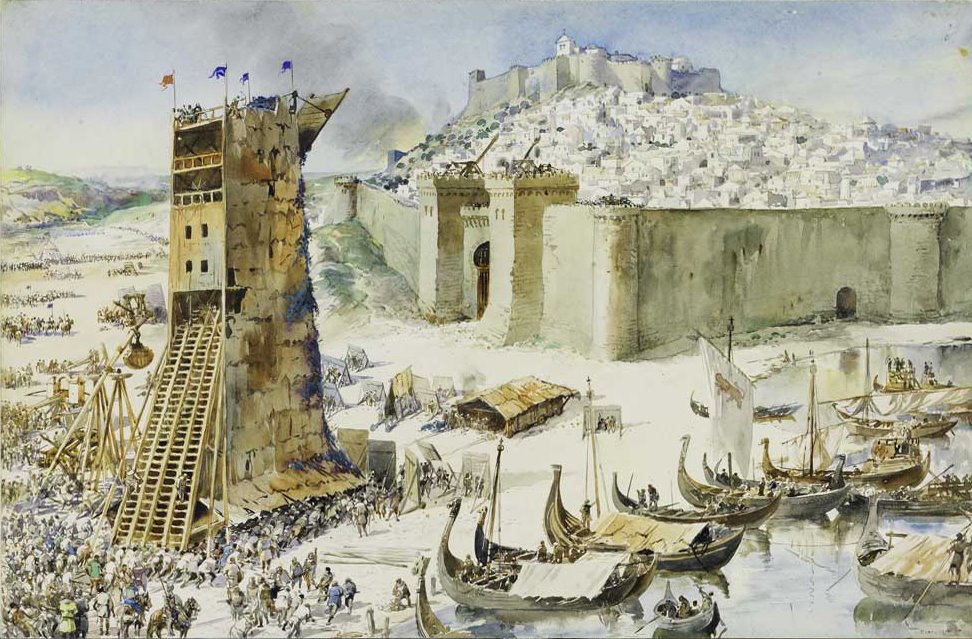
In siege warfare, the only things that normally stood between the two opposing armies were the thick city/fortress walls and the heavy wooden gates. The attacking army, apart from blocking the inflow of supplies, also regularly attacked these structural obstacles in an attempt to break through. The hardware that helped the attacking army in this effort to break through were called siege engines.
The earliest recorded use of a siege engine in the form of a battering ram dates back to 865-860 BC. The use of battering rams was followed by catapults and siege towers. However, siege engines had to wait another 500 years, until around 350 BC, to become a significant player in warfare. Philip II, followed by his son Alexander the Great, were the first to use siege engines on a broader scale. Some of the siege engines they built and used were simply mind-blowing, to say the least.
Siege Engines
Siege engines worked on simple principles of physics like tension, momentum, the science of counterweights, etc. They also came in all sizes and shapes. From simple assault ladders to massive constructions like siege towers. Some were constructed on the battlefield, while others were carried all the way through a campaign using animal-driven carts. Whatever the case, the sight of a single siege engine was often enough to terrify those people under siege.
Battering Ram
A battering ram in its simplest form used to be a giant wooden log. A group of people would hurl the log against an obstacle (a door or a gate), hoping to break through it. The massive size of the log, coupled with enough momentum, could break down even the strongest of gates. Furthermore, the greater the momentum created, the greater the damage inflicted on the obstacle. Soldiers would repeatedly ram against a specific point of a gate or door until they broke an opening through it.
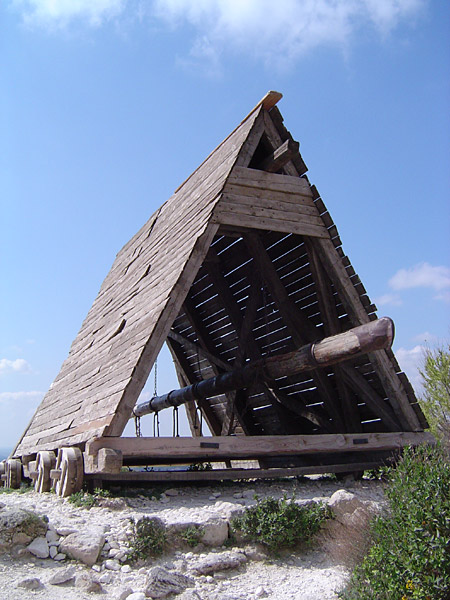
To increase the momentum and thus the damage that could be produced, battering rams were given plenty of facelifts and alterations. One of the most successful adjustments led to logs being suspended from the roofs of movable carts using flexible ropes and chains. This meant that logs of even greater size could be used. The logs would then be pulled back as far as possible before releasing them to bash into the doors. The potential energy was effectively converted to kinetic energy and used to more readily break through the gates.
The heads of some battering rams were even bolstered with metal caps to further enhance the impact. Other modifications included the use of metal bands to increase the structural integrity of the log, and the use of fireproof materials to defend against fire or oil thrown from above.
Catapults
Battering rams worked great for close-range targets, but to inflict damage from far away, armies made use of catapults. Catapults were used to hurl massive rocks at the defensive walls of the besieged cities; sometimes, rotting or disease-infected carcasses would also be hurled over the walls and into the cities. Simple catapults launched objects by swiftly converting stored potential energy. The energy was stored in the form of tension or torsion in springs, elastic ropes, etc.
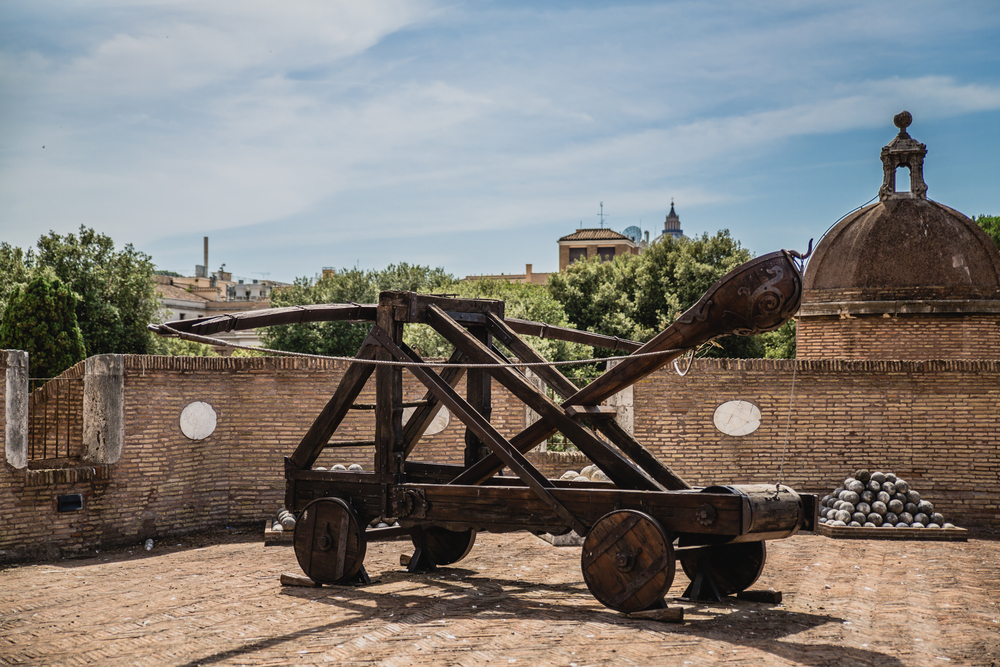
Like battering rams, catapults also underwent quite a few modifications over the years. Some adopted the existing catapult mechanism and evolved these weapons into giant crossbows, while others improved the basic catapult design to increase their firing capacity and range. Different types of crossbows developed, including the ballista, springald and scorpio. The ballista was the mightiest of the three and could shoot metal bolts and stones up to 500 yards. The springald and scorpio, on the other hand, resembled the ballista in construction, but were much smaller and designed for use in tight spaces.
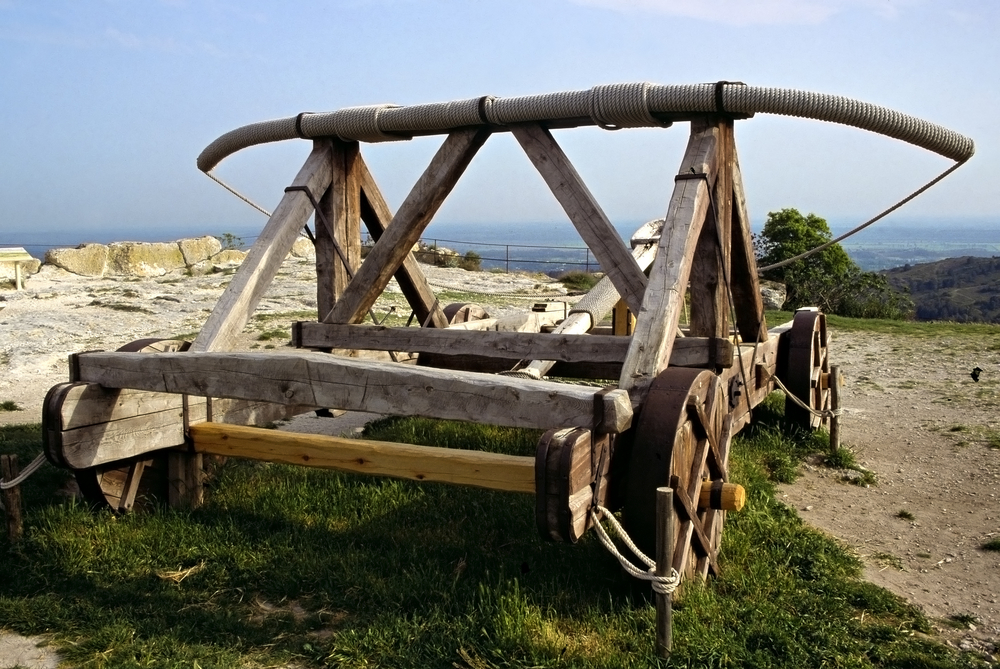
Onager, a modified version of the catapult, included a bowl-shaped bucket on the loading end of the arm that could shoot missiles up to 1300 feet. Trebuchets were the mightiest of all catapults and relied on a slightly different working mechanism. A massive swinging arm replaced the torsion springs of the basic catapults in the trebuchets. Earlier trebuchets made use of manpower to swing the arm, while more advanced versions relied on counterweights to swing and hurl missiles. The trebuchets were massive in size and thus often constructed directly on the battlefield.
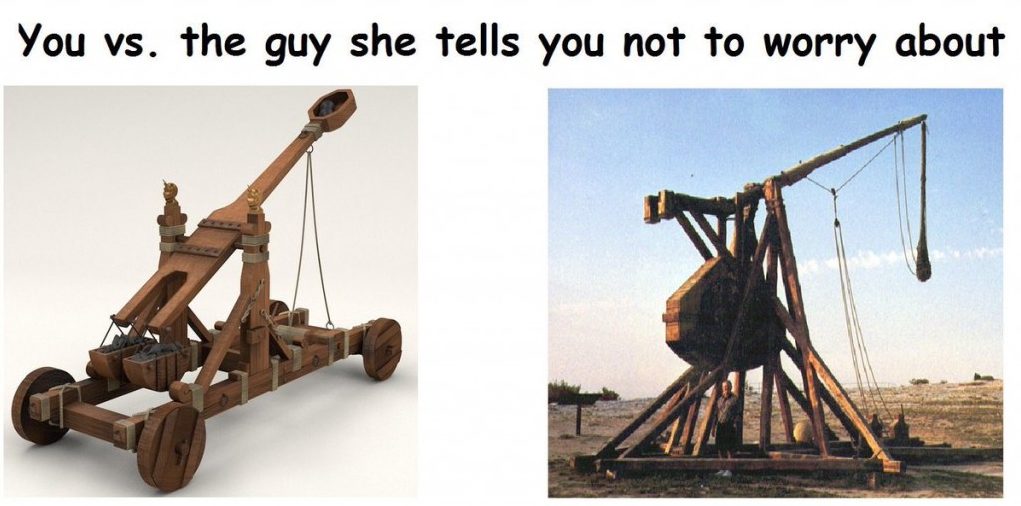
Siege Towers
Siege towers were the largest and most impressive siege engines of the medieval period. As the name suggests, siege towers were massive, multi-story towers mounted on wheels so they could be moved around and placed adjacent to the defensive walls. The siege towers stood as high as the fortress walls, and sometimes even higher! The towers were mostly made of wood, along with some protective covering of iron or animal hides to defend against fire. Due to their sheer size, siege towers were constructed on the battlefield itself, similar to the trebuchet.
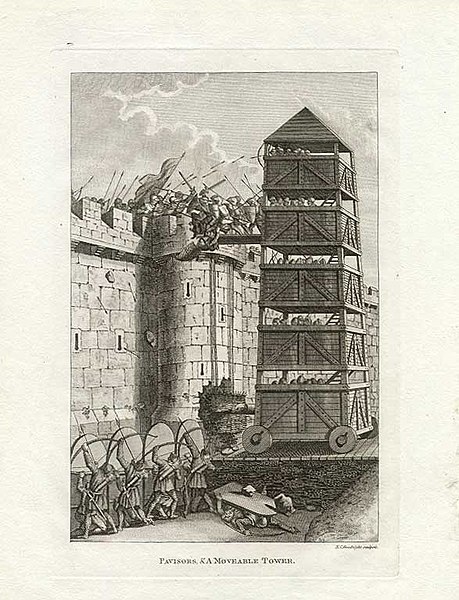
The siege towers housed soldiers for close-range combat. These included swordsmen, archers, spearmen, etc. Once a siege tower was close enough to the defensive wall, a gangplank would be dropped between the two, allowing soldiers to rush in and attack. The biggest siege tower ever built soared at 135 feet and was as wide as 67.5 feet. The tower was named Helepolis, meaning “The Taker of Cities”.
Also Read: How Do Aircraft Take Off Ships When The Runway Is So Small?
Conclusion
After sending chills down the spine of defending armies for more than a thousand years, traditional siege engines lost popularity with the advent of gunpowder and further advancements in the field of metallurgy.
Piston-driven rams replaced innocent wooden battering rams, cannons replaced catapults, and guns took over from crossbows, like the ballista. As for siege towers, no modern wall is big enough to block out modern missiles and other airborne weapons, so the idea of needing to overcome a wall feels somewhat outdated. Nonetheless, siege engines played an integral part in historical battles and also helped shape modern weapons in countless ways!
Also Read: How Were Warriors In Full Body Armor Killed In Ancient Battles?
How well do you understand the article above!

